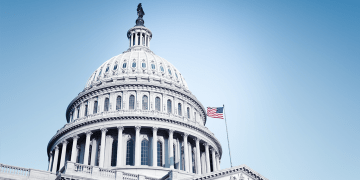States Face Uncertainty as an Estimated $6.2 Billion in K–12 Funding Remains Unreleased: Here’s the Fiscal Impact by State

Despite Congressional authorization, states and territories are missing billions of federal K–12 funding as approved education funds remain frozen by the U.S. Department of Education (ED). This extended withholding of funds—called “impoundment”—threatens essential services for millions of students, including summer programs, after-school activities, and support for migrant children and English learners. In March of this year, Congress passed a continuing resolution that provides federal funding through the end of fiscal year 2025, which President Trump signed into law. This law includes approximately $45 billion to support K–12 students across the nation—with most funding targeted towards the country’s most underserved students.
Annual practice is that, after Congress appropriates the funds, ED provides states and territories with “allocation tables” that inform them of the exact amount of funding they will receive from each federal education formula grant program. Typically, ED provides state educational agencies the formula program allocation tables and access to draw down those funds by July 1, providing states and districts the ability to plan, budget, and start to spend for the upcoming school year. The July 1 date is significant because these funds support, for example, summer programs and help districts prepare for the early school year start in many states. Any funds not allocated by ED to states and territories will expire and return to the U.S. Department of Treasury instead of being used to support students.
As of this posting, states have not received the allocation tables necessary for them to be able to draw down funds on July 1 for several education programs authorized under the Elementary and Secondary Education Act and available through the continuing resolution. On June 30, states were notified by ED that “decisions have not yet been made concerning submissions and awards for this upcoming academic year,” with no date provided for when or if states would receive these funds. Five of these programs include:
- Migrant Education. These funds support migratory children in reaching challenging academic standards and graduating from high school.
- Supporting Effective Instruction. These funds support increasing student achievement by improving the quality and effectiveness of educators and underserved students’ access to effective educators.
- English Language Acquisition. These funds help students learn English and meet challenging state academic standards.
- Student Support and Academic Enrichment Program. These funds support improving student academic achievement, including by providing students with access to a well-rounded education, improving school conditions for student learning, and improving the use of technology.
- Nita M. Lowey 21st Century Community Learning Centers. These funds provide academic enrichment opportunities such as literacy and other educational services during non-school hours (e.g., through after-school or summer programs) for students and families—particularly those in underserved and low-performing schools.
An estimated total of $6.2 billion in Congressionally appropriated funds across these five programs currently remains unavailable to states and territories (see table below). All states and territories are facing severe impacts, with the funds across these five programs totaling 10% or more of their overall federal K–12 funding. And for 17 states and territories, the total funds are 15% or more of their overall federal K–12 funding, potentially forcing difficult cuts to critical programs.
The withholding of these federal funds by an administration through action or inaction is referred to as “impoundment.” A president may not temporarily or permanently withhold funds without submitting a "special message" that includes the funding amount, rationale, and budgetary effects of the proposal to freeze (or impound) those funds. The issuing of a special message allows an administration to withhold the funds for up to 45 legislative session days. Both houses of Congress would then need to approve the request by a simple majority of votes. If Congress does not approve a rescission request by an administration within 45 days, the request is considered denied, and the administration must release the funds. As of this posting, no special message has been sent by the current Administration to Congress related to these five programs.
If ED refuses to make these funds available to states and territories without Congressional approval, the Government Accountability Office (GAO) is responsible for taking action. Starting on July 1, the GAO can investigate the effects of the withholding on states and territories, school districts, and students and report illegal impoundment to Congress. GAO can then bring civil action against the Executive Branch for failing to obligate appropriated funds on a timely basis.
GAO is already investigating at least 39 potential violations of the Impoundment Control Act by the current Administration. GAO is beginning to release initial findings from some of the investigations and recently found, for example, that the Administration illegally withheld funds that were supposed to go to the Institute of Museum and Library Services. If GAO takes civil action as a result of any of these investigations, it will be a lengthy process and one that could eventually reach the U.S. Supreme Court.
For now, states and territories must begin to plan for the possibility that these funds may not become available, and if they do, it may not be for several months or longer. For example, some states may need to replace these funds with state funds, provide funding to school districts most impacted and unable to replace the funds, or take other actions depending on what steps GAO takes and the timing. While the situation may still be resolved, preparing contingency plans now could help to mitigate disruption to essential programs that serve the students, educators, and families who depend on them.
